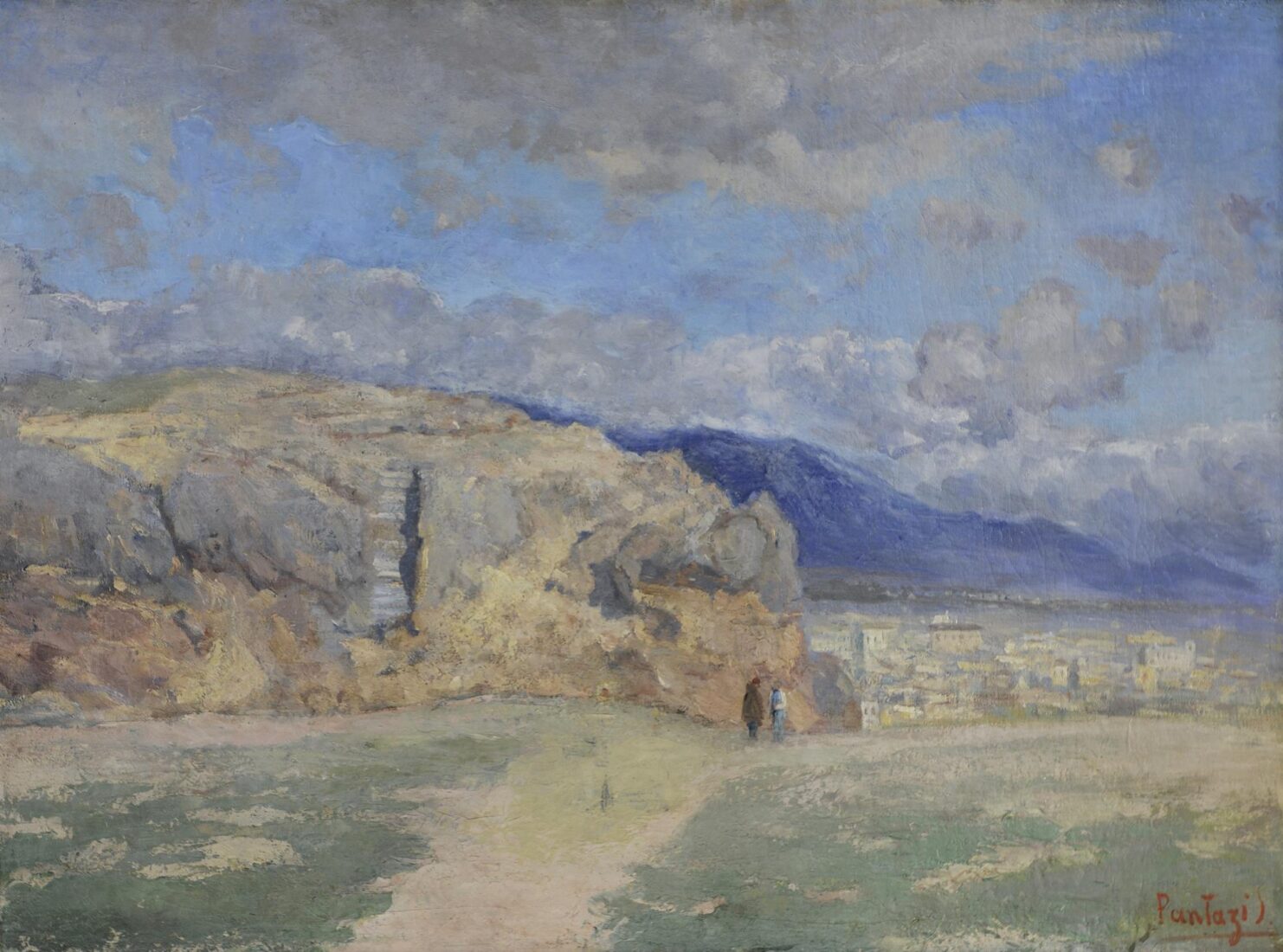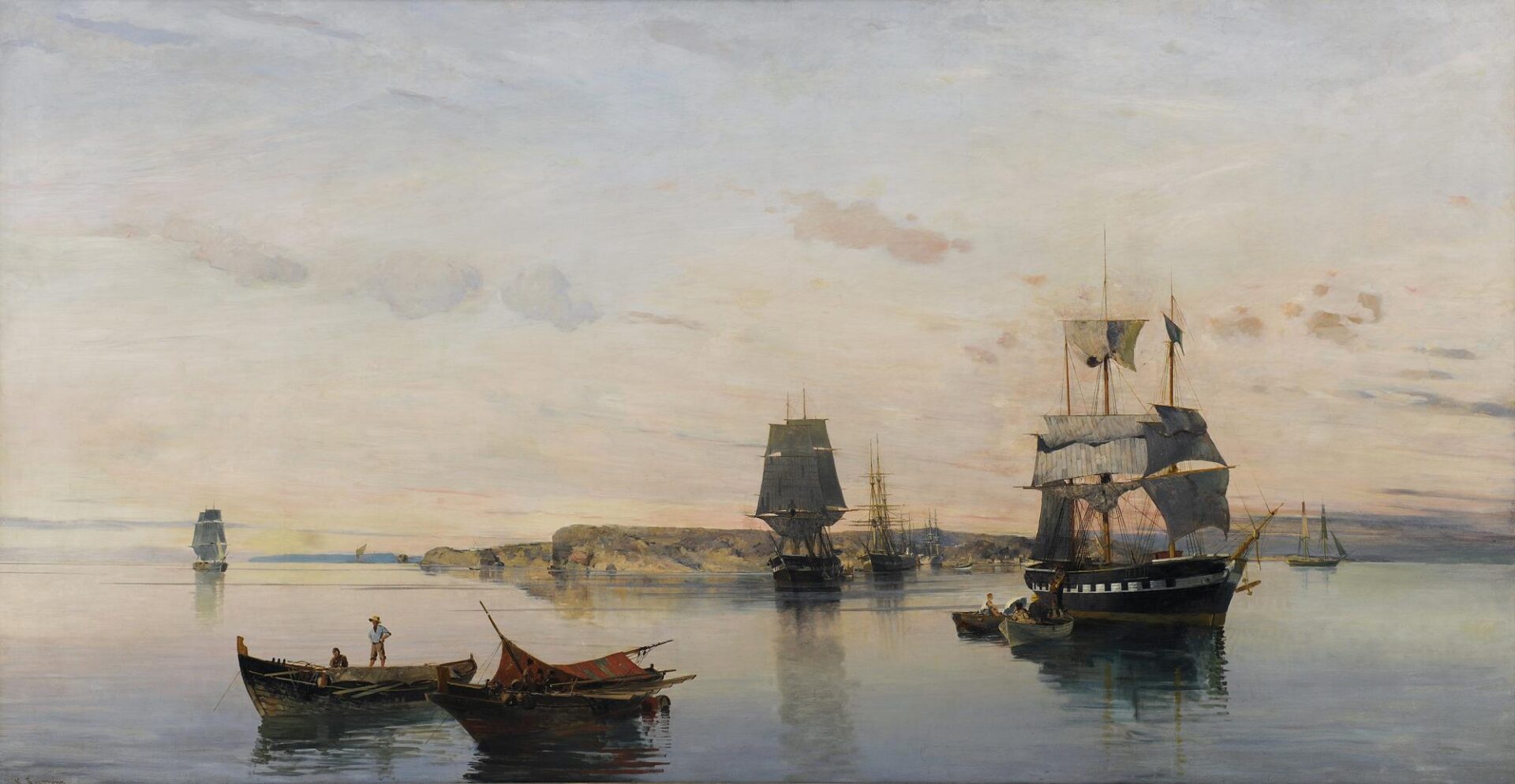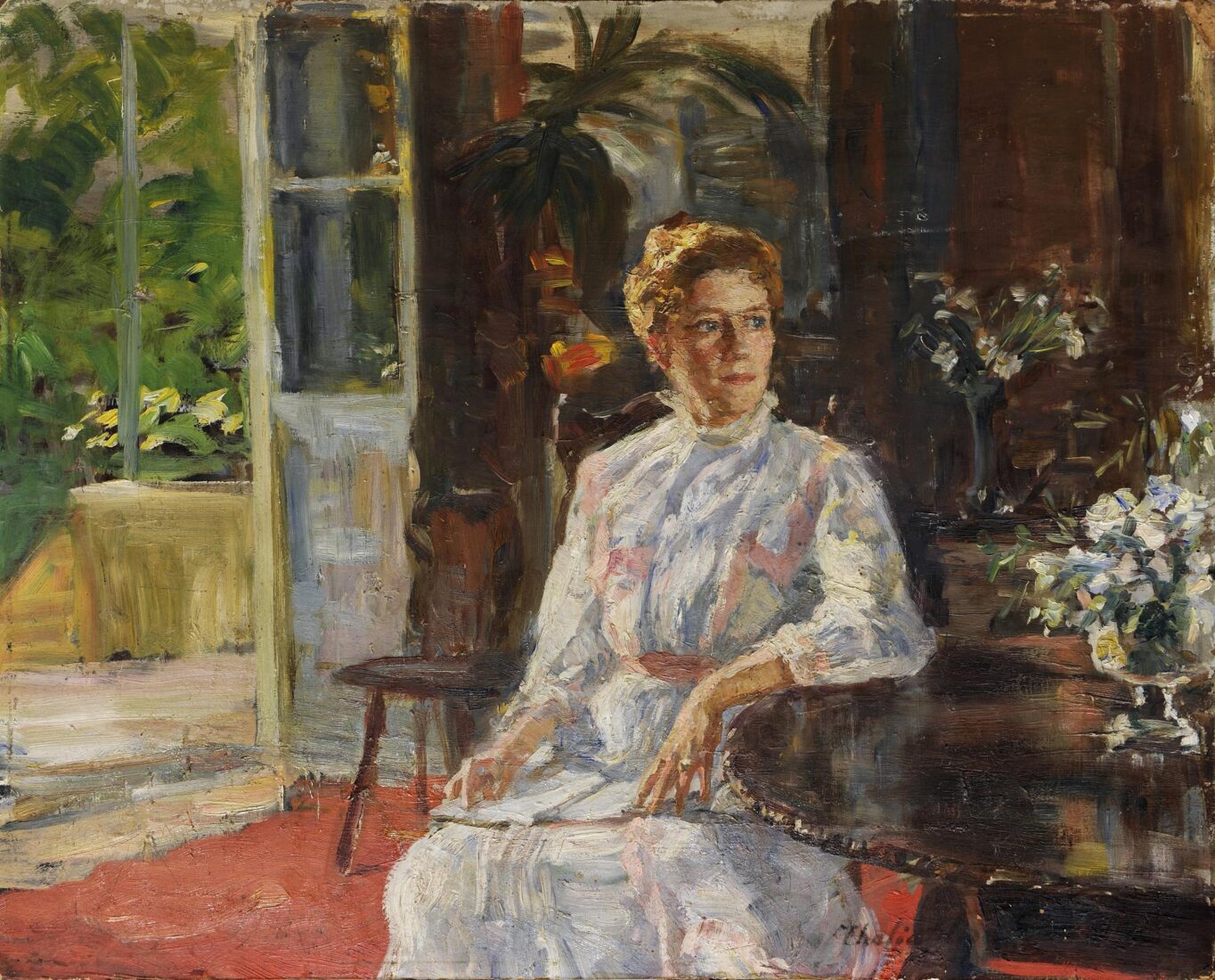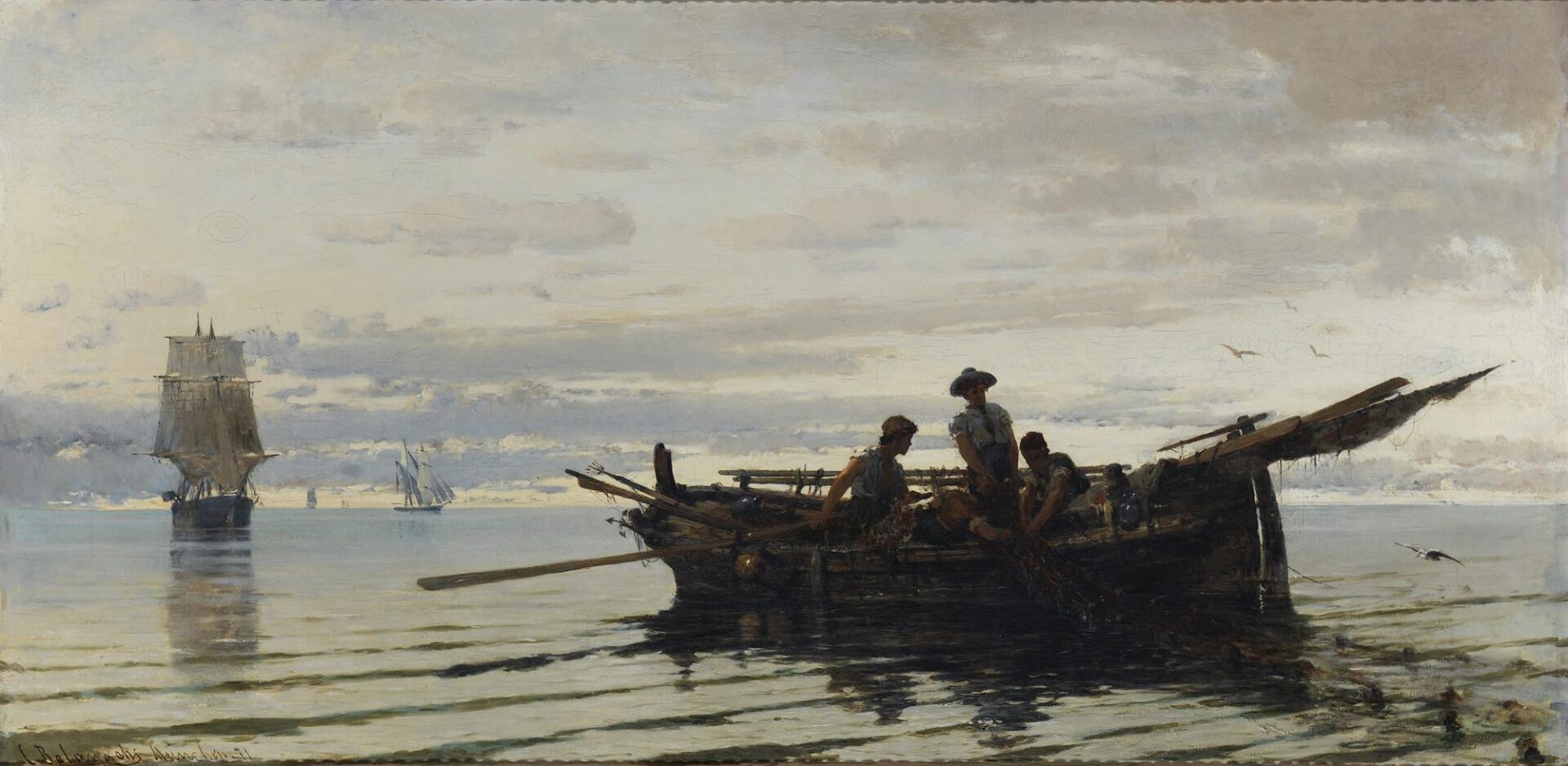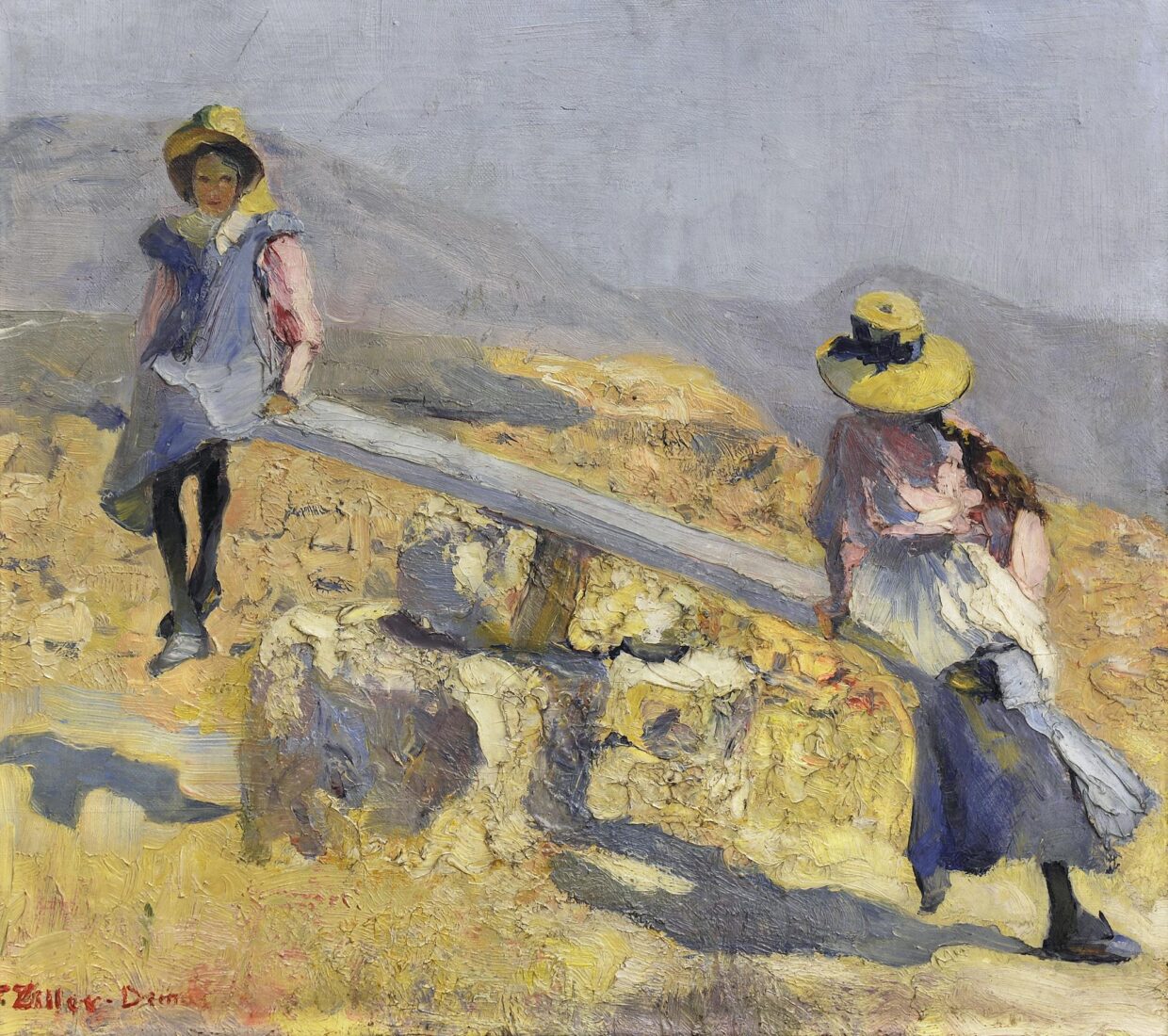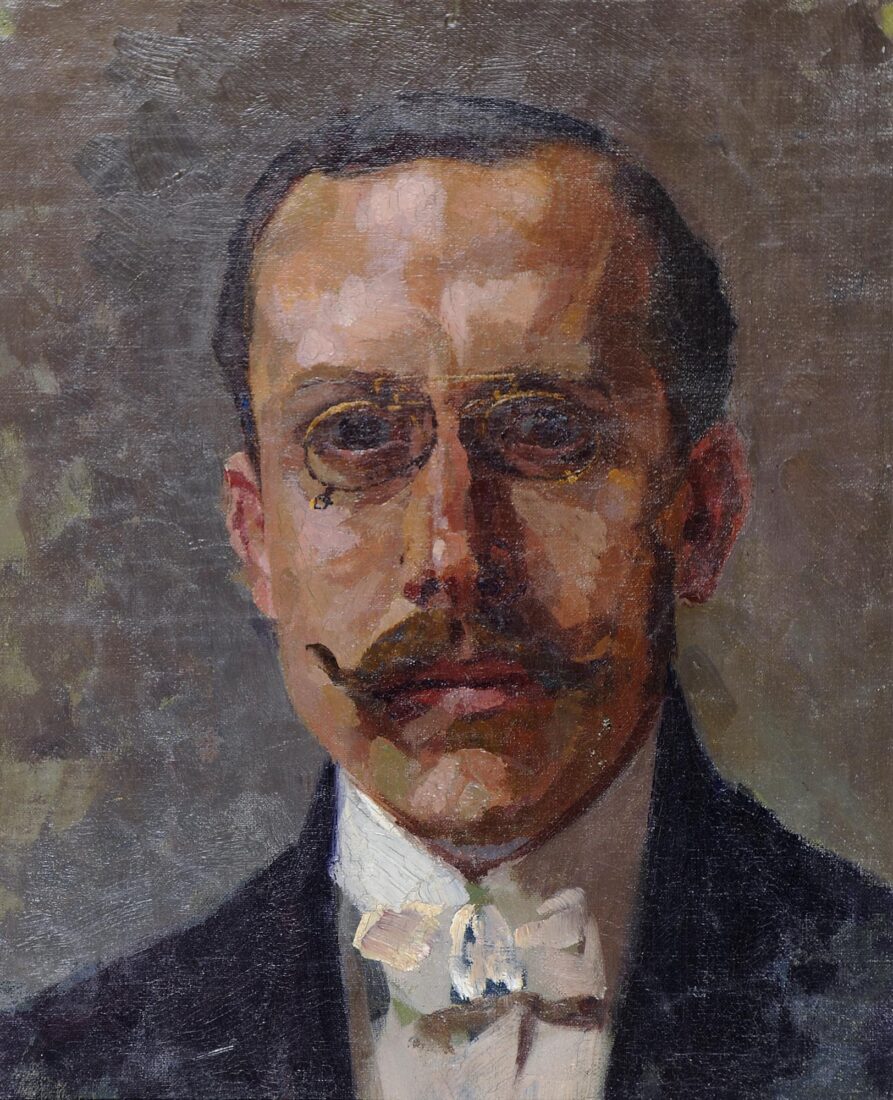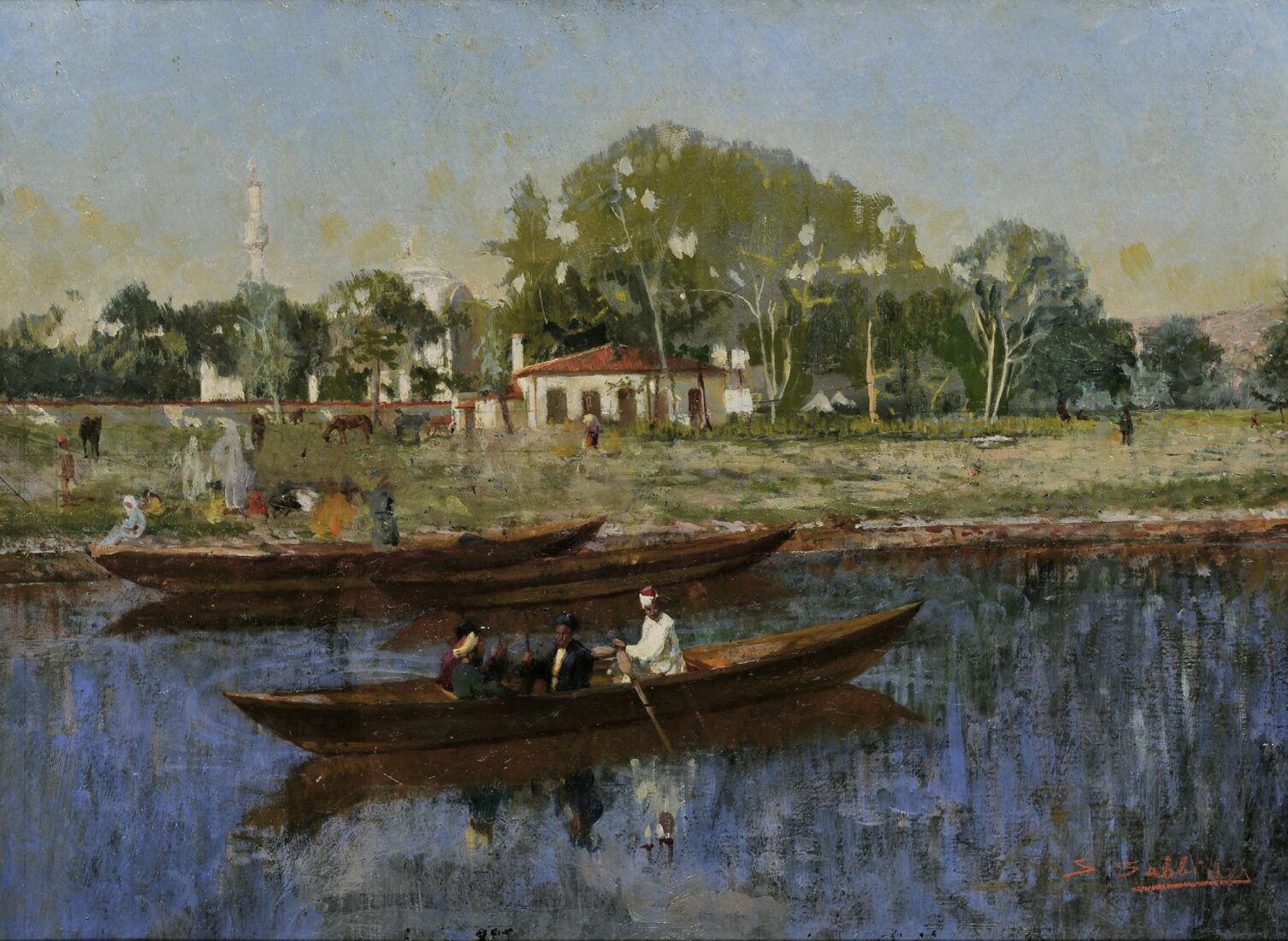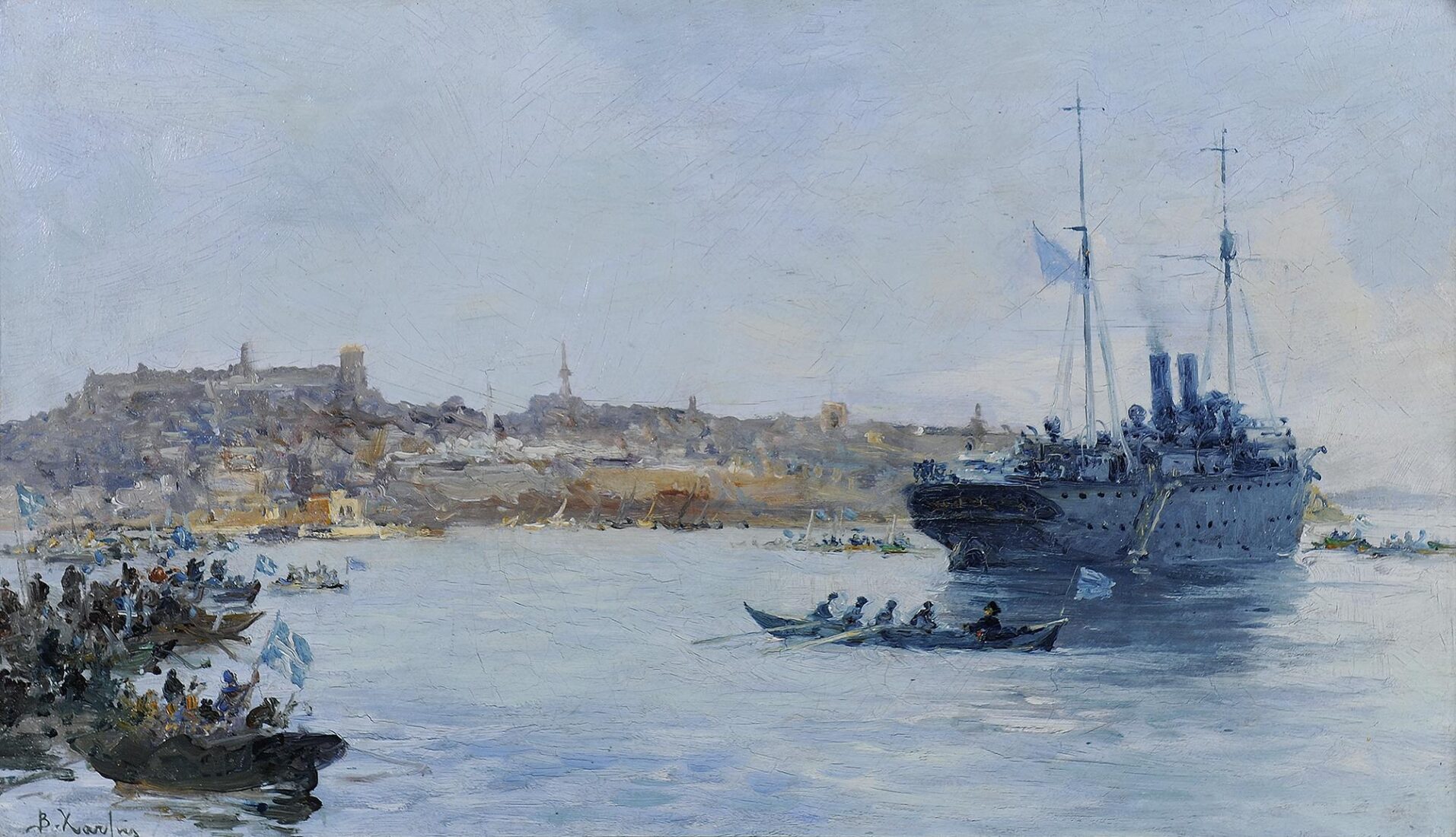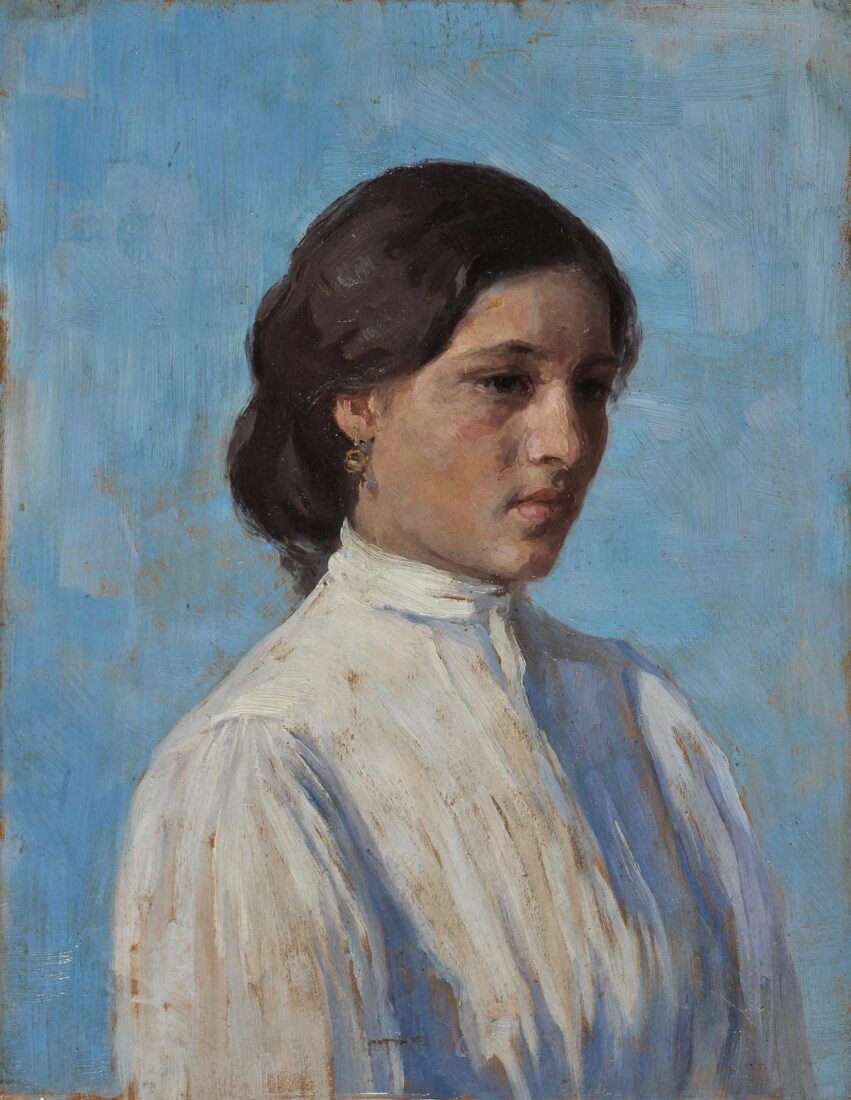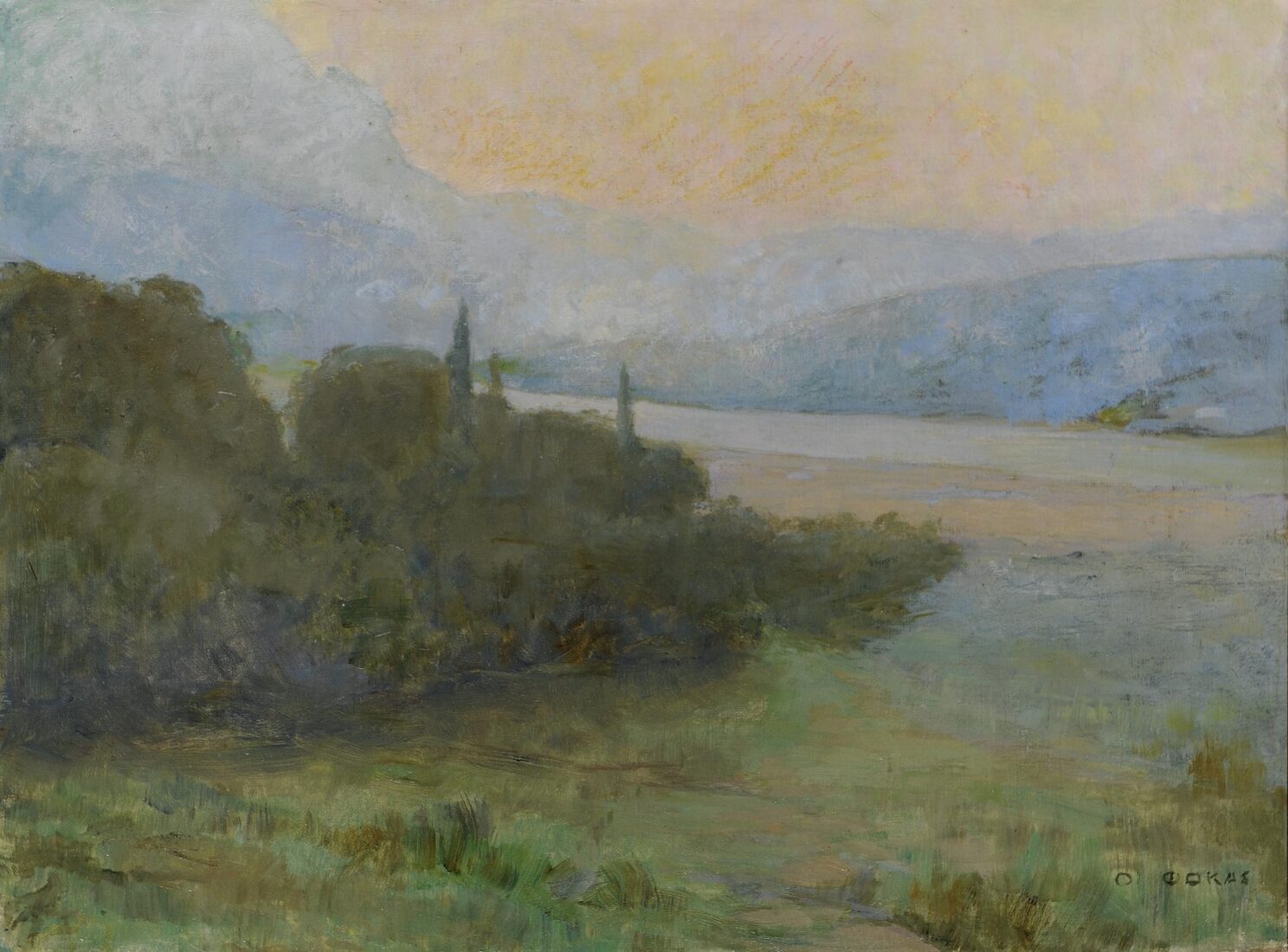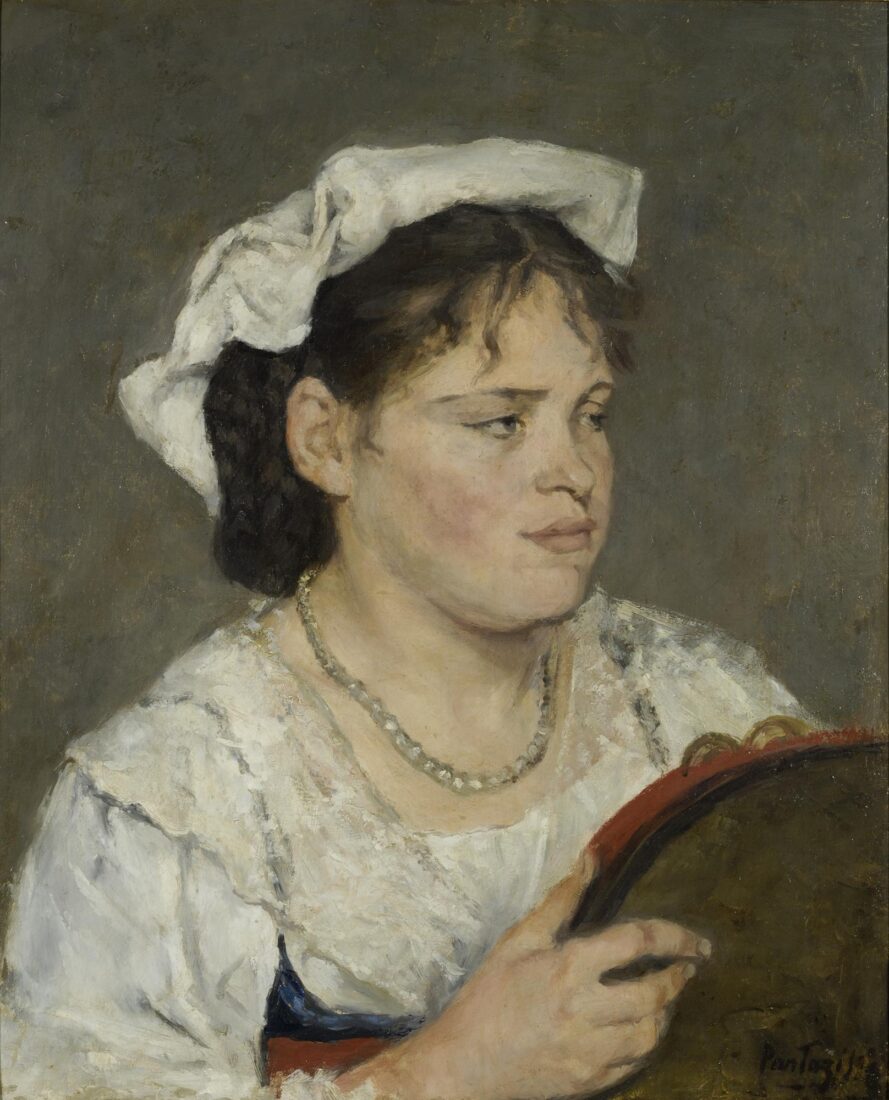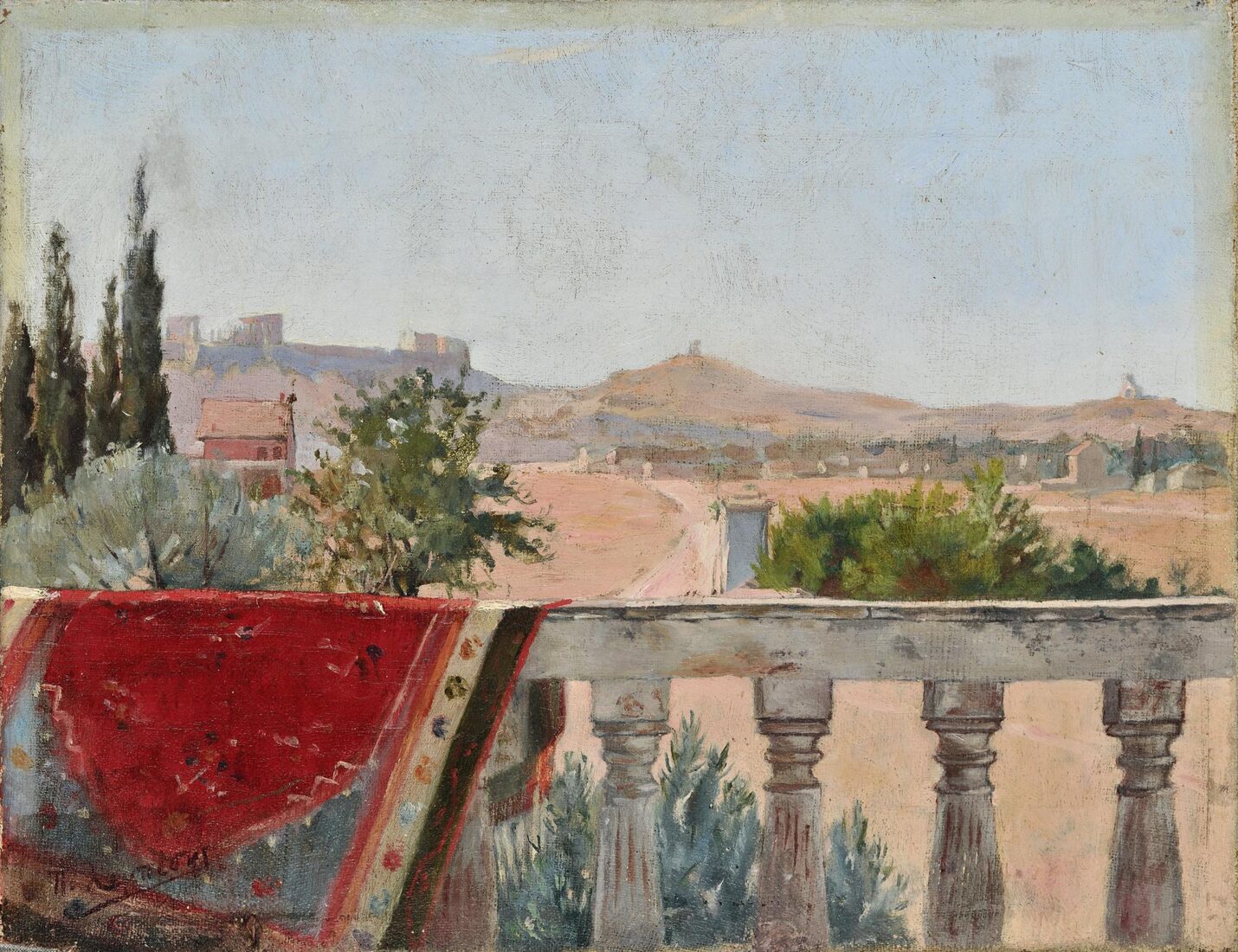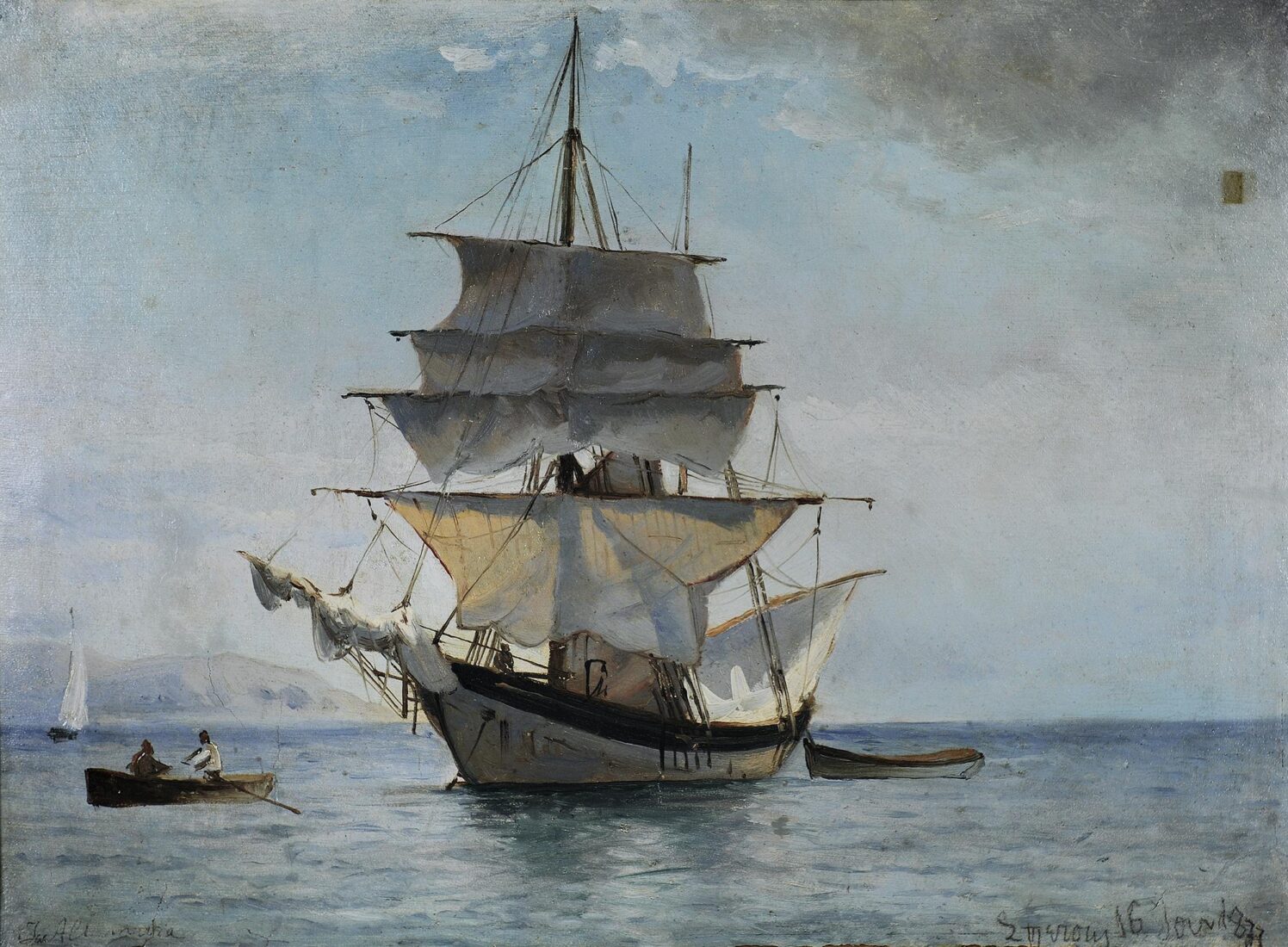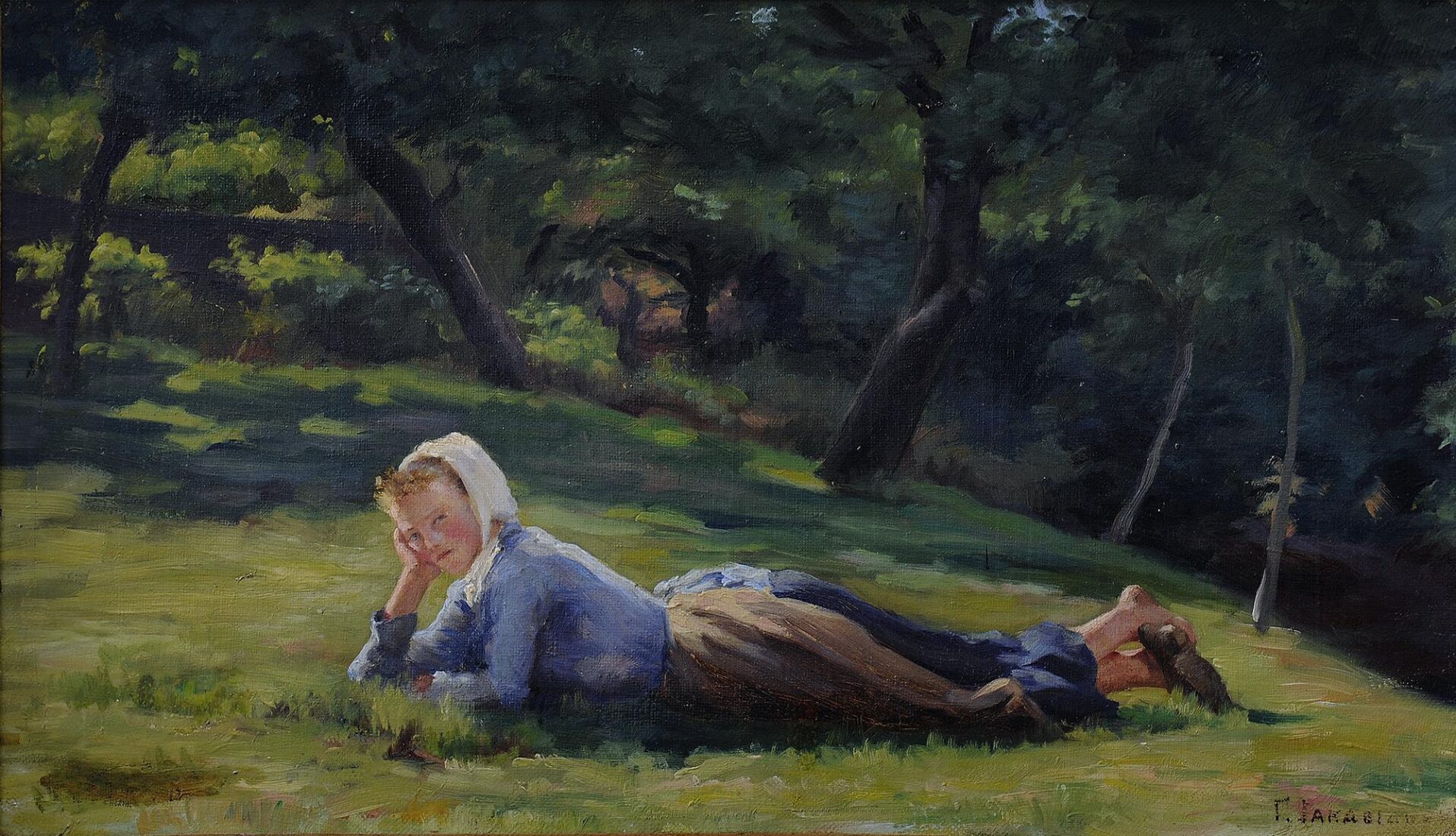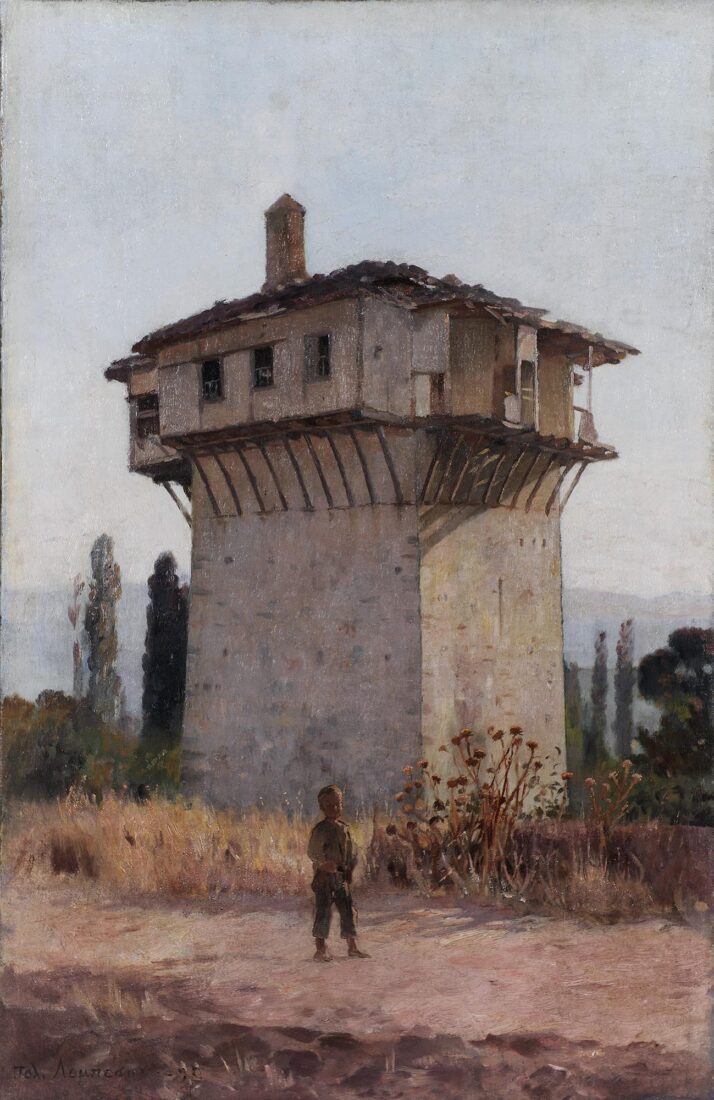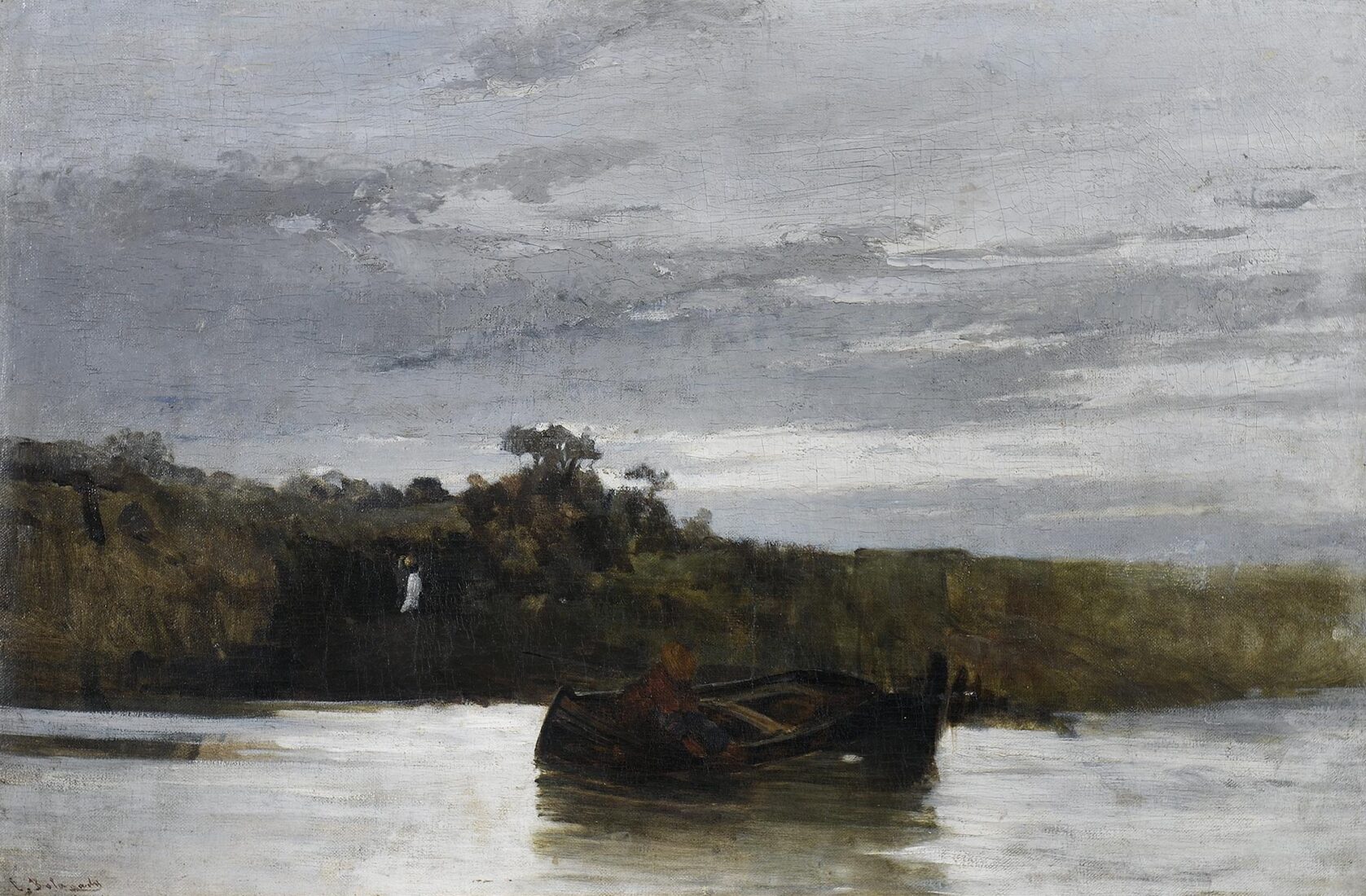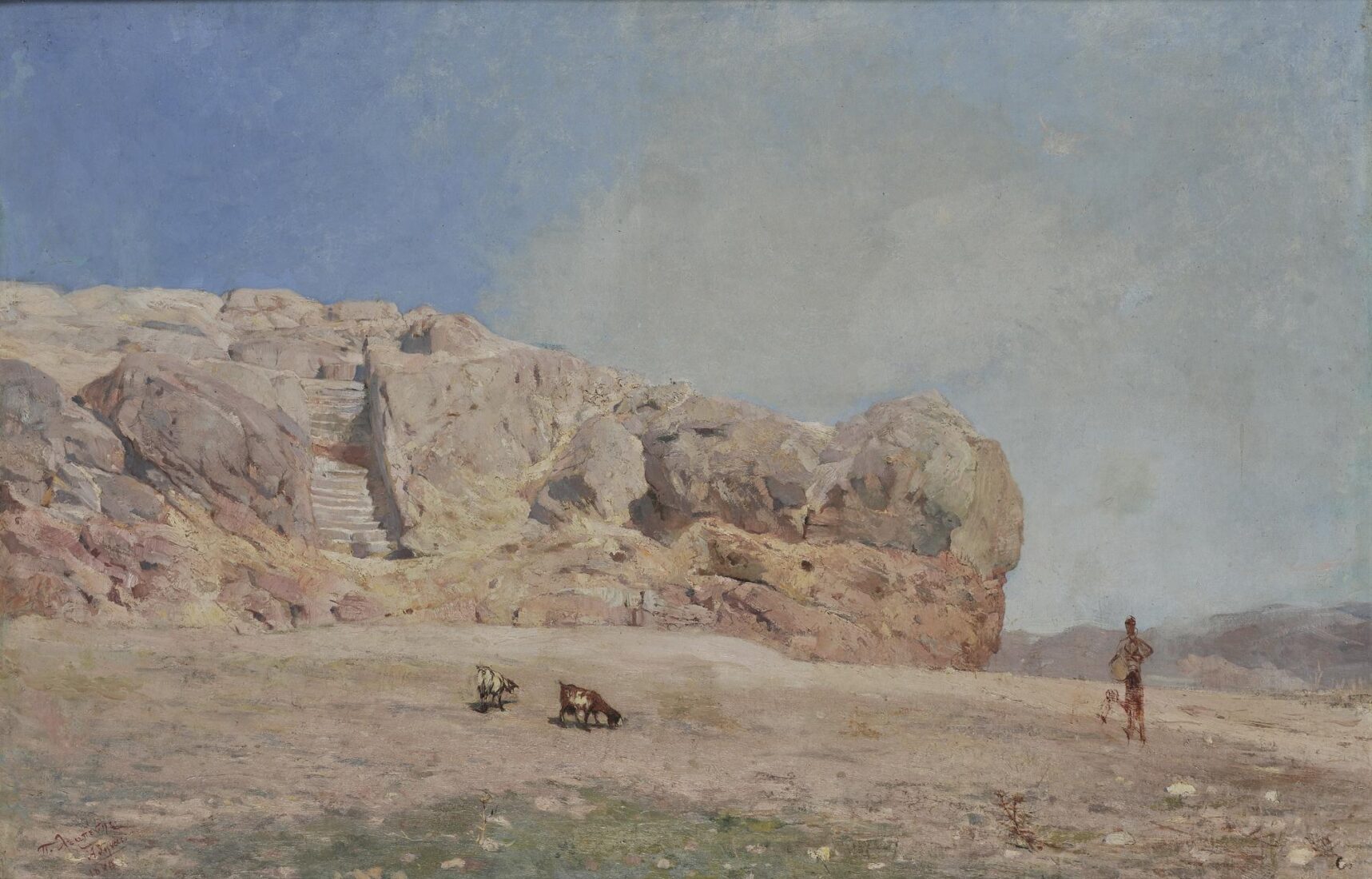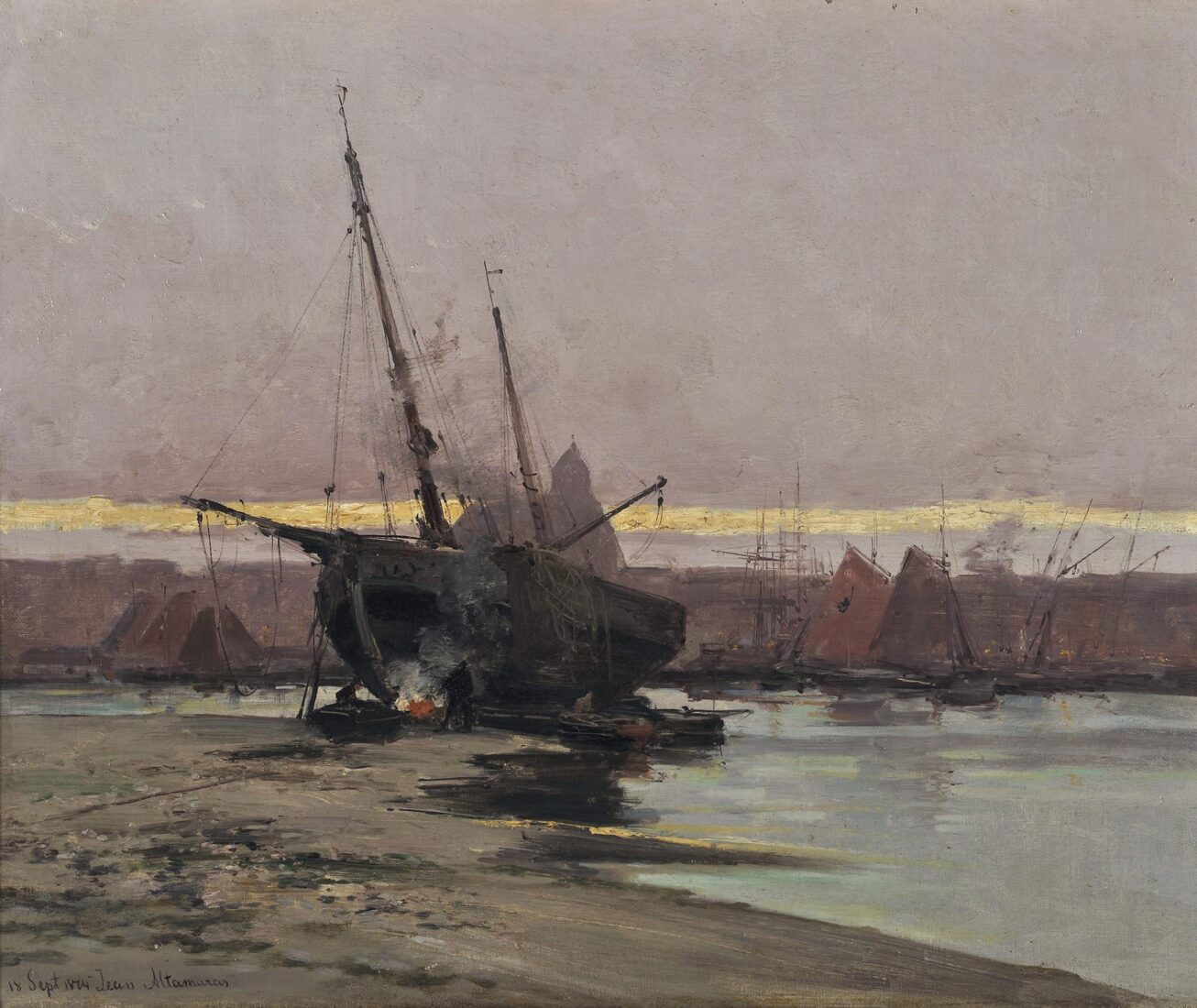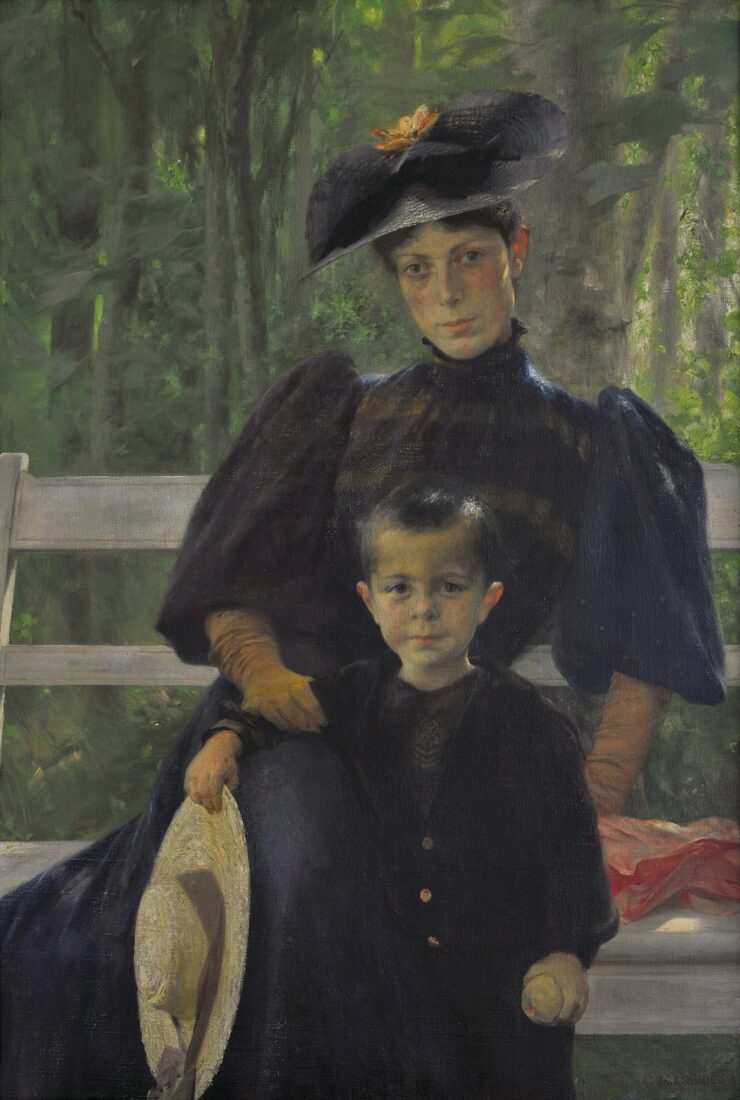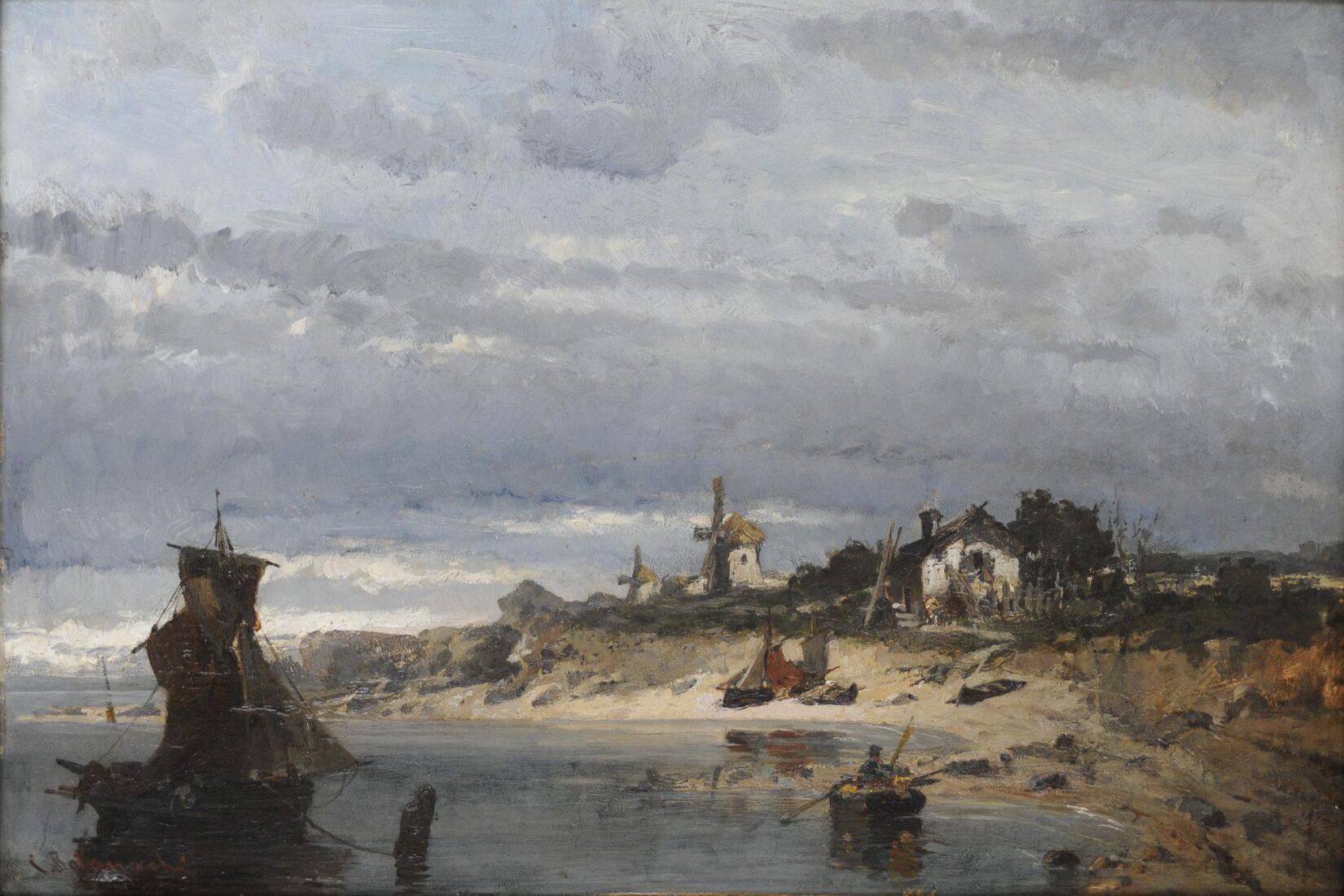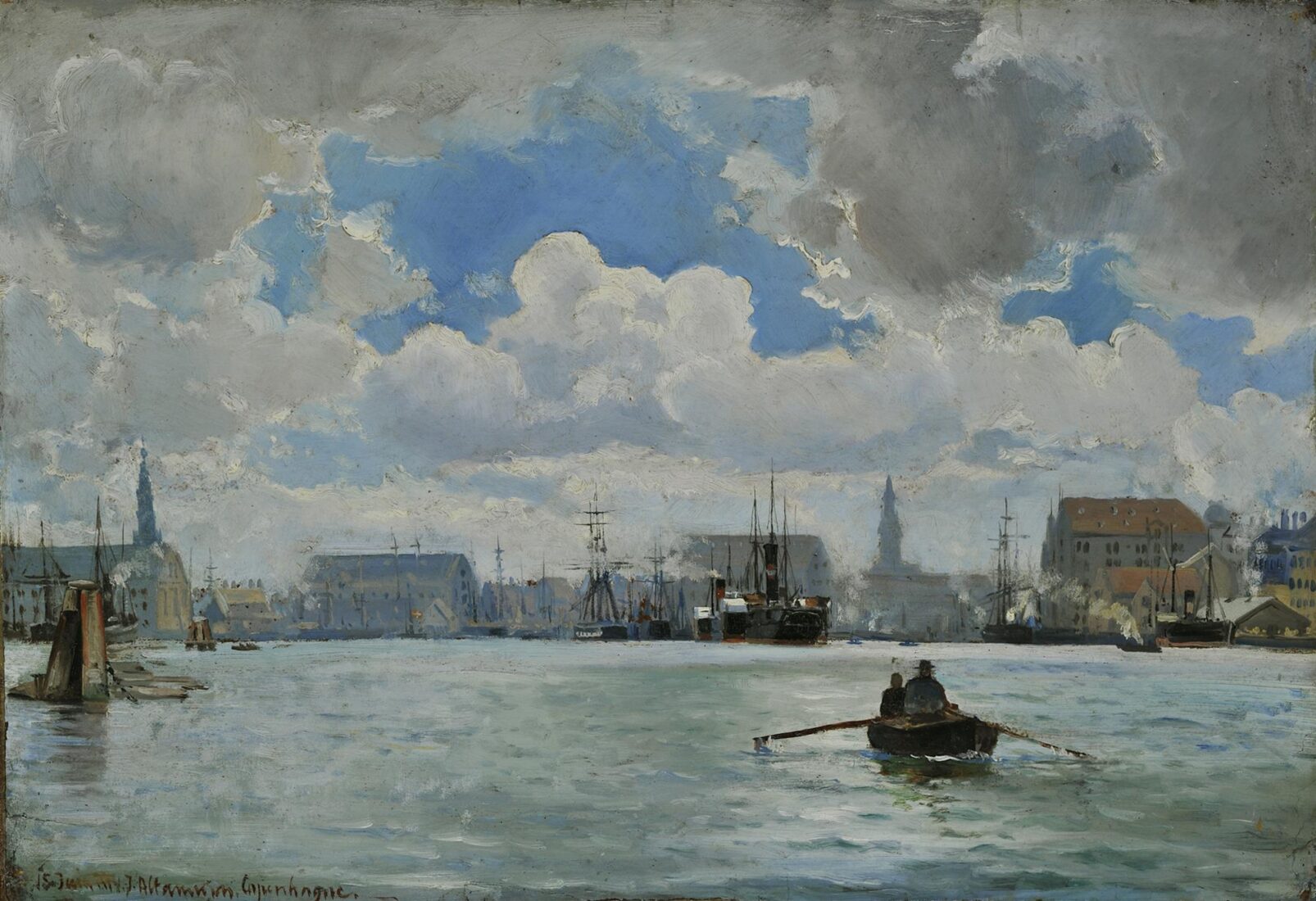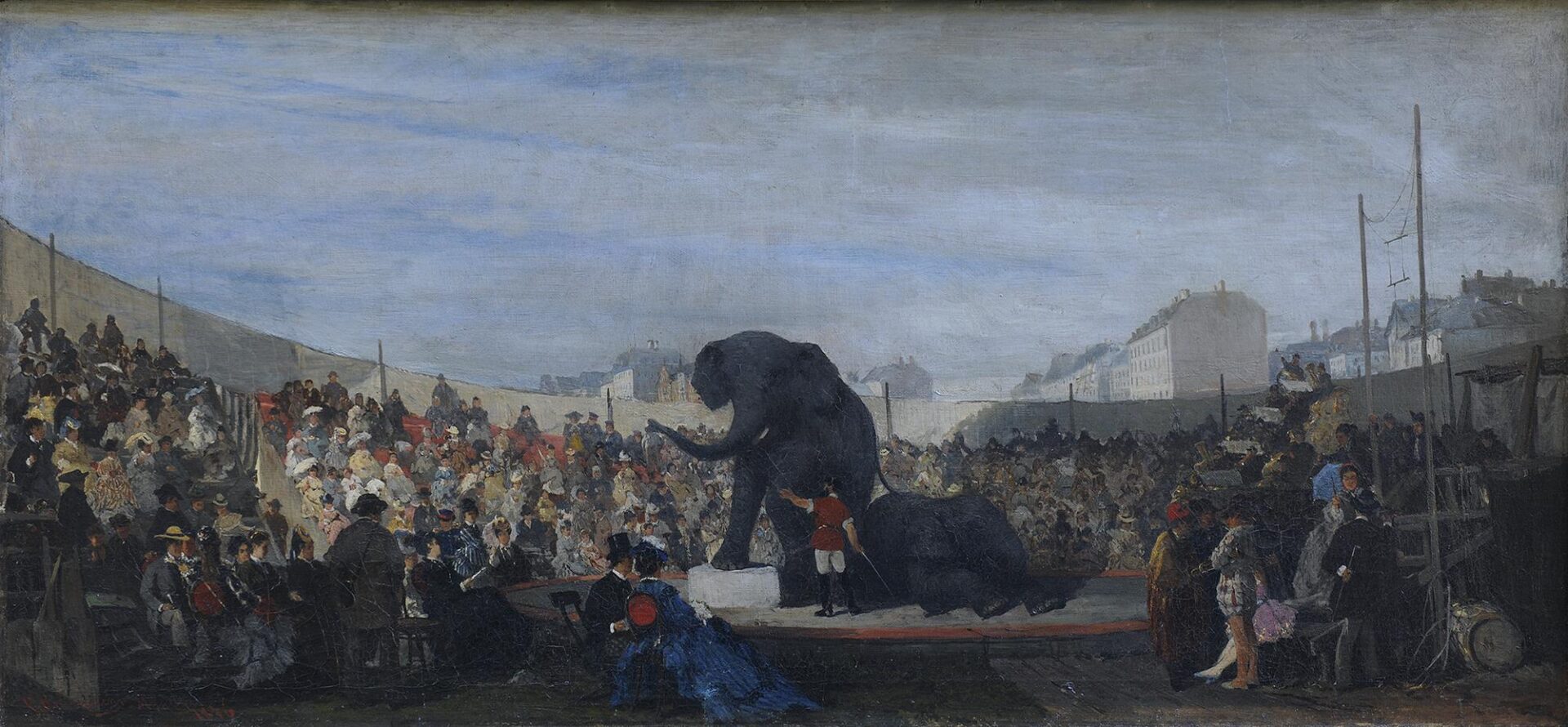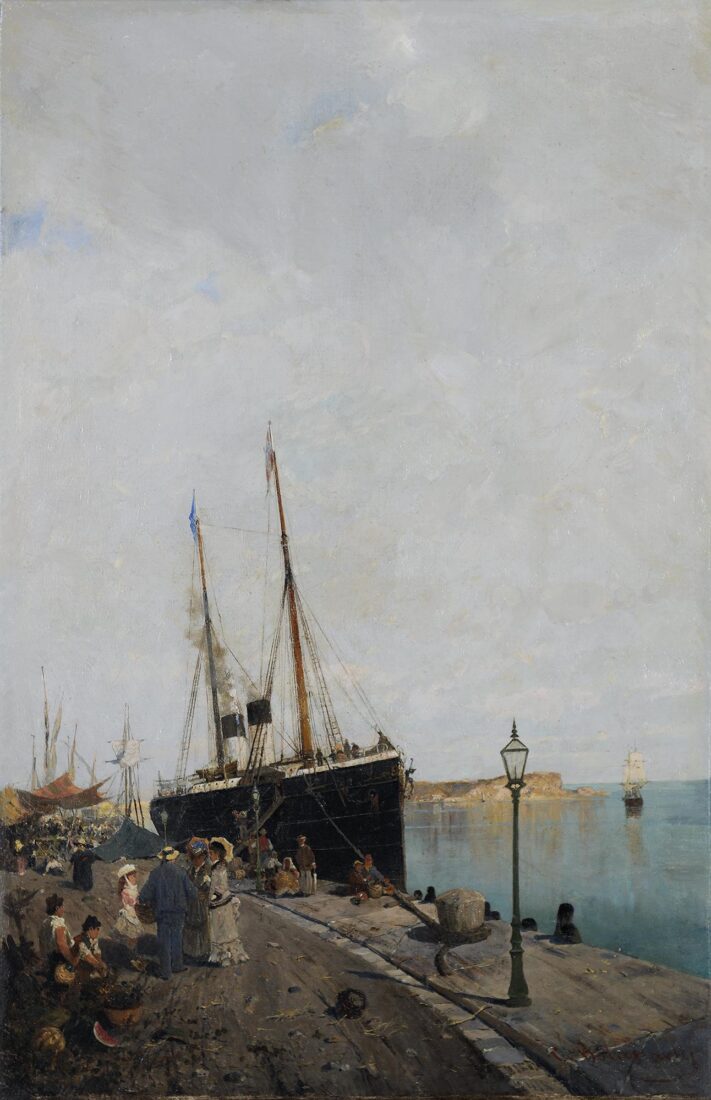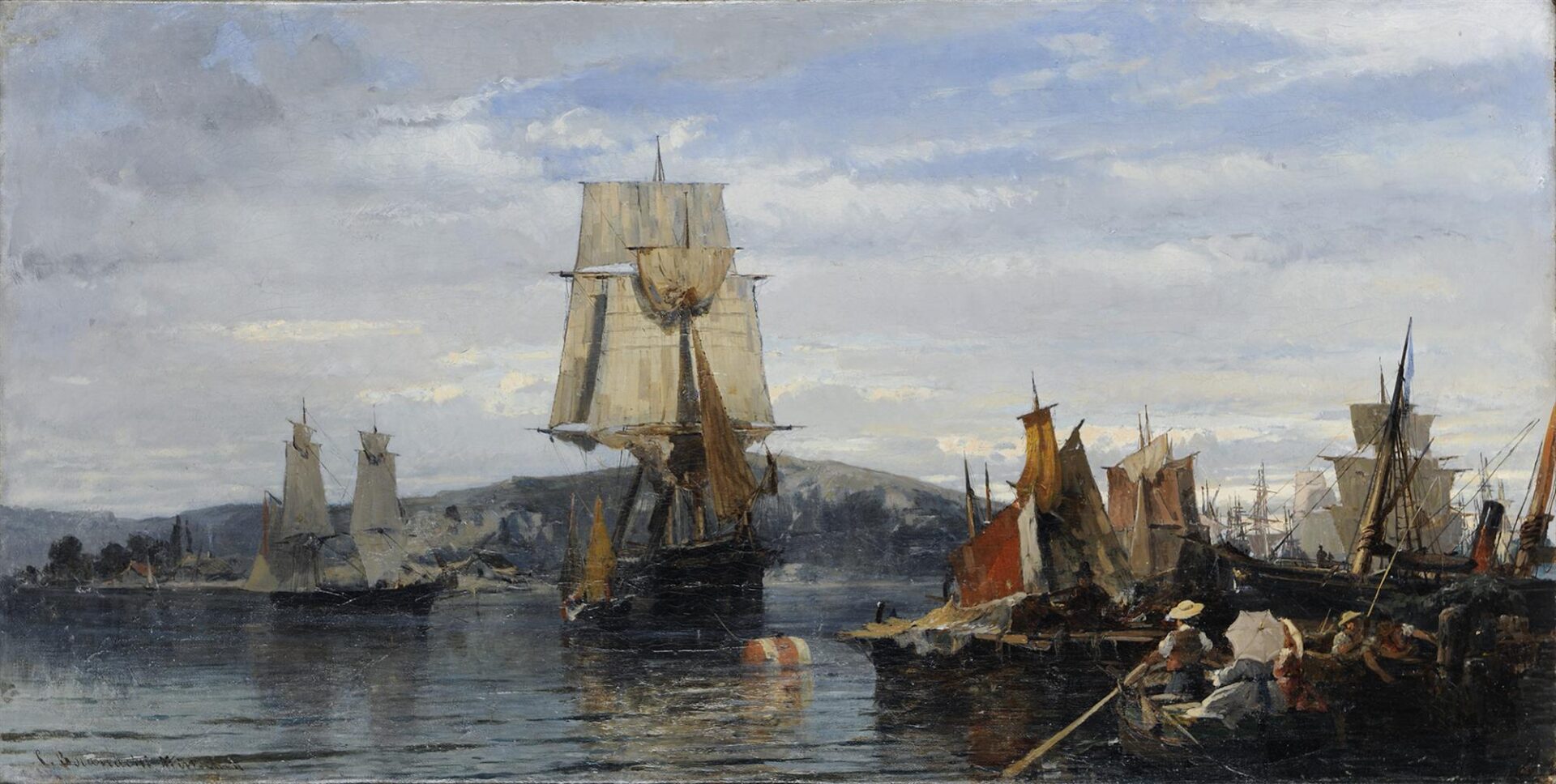As this painting and the “Areios Pagos” by Lembesis were produced during the same year, 1880, and their makers were friends, they may well have been made at the same time, as was the habit of Impressionist painters. It is interesting to compare the two paintings in order to find out how two painters coming from two different schools – Lembesis from Munich and Pantazis from Brussels – approached the historical rock of the Areios Pagos on a summer day. Let us first see the elements they have in common: the two paintings share the same dominant colour tonality, based on the interplay of gold-yellow ochre on the rock and grey-blue in the sky. In both paintings, shades are purple. Therefore, both painters are familiar with the Impressionist “recipe.” So, where is the difference to be found? In “writing,” in brushwork, and in rendering volume. Lembesis’ writing is meticulous; he draws and captures every detail in the subject. The rock, on the other hand, maintains all of its compactness, it is solid. On the other hand, let us see how Pantazis, who is more of a true impressionist, approached his subjects. His technique is utterly different. Here, free brushwork can be seen at work, “building” the form. The rock is not trapped within a closed outline; rather, it is an open form. Also note the sky and the clouds, rendered in the most agile brushwork. In the dry Attic light, of course, forms maintain their shape, they are easy to draw clearly. One is therefore at a loss as to which painting is the most faithful interpretation of reality.
This excellent work, acquired in 2002 by the National Gallery, may be considered as one of Volanakis’ most free “impressionistic” achievements. Painted in Munich, it depicts fishermen pulling the nets at sunrise. The boat and the fishermen are shown as silhouettes, as the light is coming from behind, from the background. The sky and the waves are flooded with light, which is rendered in orange and violet tones. The brushwork is free, and the entire work pulsates with life.
This painting and the “Areios Pagos” by Periklis Pantazis were produced during the same year, 1880, and their makers were friends, they may well have been made at the same time, as was the habit of Impressionist painters. It is interesting to compare the two paintings in order to find out how two painters coming from two different schools – Lembesis from Munich and Pantazis from Brussels – approached the historical rock of the Areios Pagos on a summer day. Let us first see the elements they have in common: the two paintings share the same dominant colour tonality, based on the interplay of gold-yellow ochre on the rock and grey-blue in the sky. In both paintings, shades are purple. Therefore, both painters are familiar with the Impressionist “recipe.” So, where is the difference to be found? In “writing,” in brushwork, and in rendering volume. Lembesis’ writing is meticulous; he draws and captures every detail in the subject. The rock, on the other hand, maintains all of its compactness, it is solid. On the other hand, let us see how Pantazis, who is more of a true impressionist, approached his subjects. His technique is utterly different. Here, free brushwork can be seen at work, “building” the form. The rock is not trapped within a closed outline; rather, it is an open form. Also note the sky and the clouds, rendered in the most agile brushwork. In the dry Attic light, of course, forms maintain their shape, they are easy to draw clearly. One is therefore at a loss as to which painting is the most faithful interpretation of reality.
Following his graduation from the Athens School of Arts, Ioannis Altamouras continued his studies in Copenhagen, Denmark, encouraged by King George I of Greece. Although he died very young, when he was still 26, he managed to produce several works which can arguably be considered as true pre-Impressionist art. One of them is the “Copenhagen Harbour”, made in 1874, that is, the same year when the first Impressionist group exhibition was organised in Paris. In this painting, the Copenhagen shore, with the dimly delineated buildings, the castles, the smoking smokestacks and the great ships at anchor, is a dark horizontal line, splitting the painting surface into two. One third is occupied by the sea, where a dark rowing boat can be seen, and two thirds are taken up by a sky with fleeting clouds. Water and sky are the main elements in this painting. In fact, time is the true protagonist here, flying and changing the face of the world from one moment to the next. Using swift brush strokes in order to capture these fleeting phenomena, the painter records the shifts of colour and their iridescence on the waves. Note the great variety of colours in the clouds and see if you can identify their respective reflections on the water. Complementary couples of blue-grey, orange-ochre and violet prevail.
Konstantinos Volanakis is the greatest 19th century Greek seascapist. He mostly painted seascapes featuring beaches, ships, fishing boats, naval battles as well as historical subjects. This work is of a different content. It is a circus scene, such as those still performing today during the Oktoberfest in Munich. Spectators on the packed rows of an improvised theatre are watching the “acrobatics” performed by two elephants on a round stage, led by an animal tamer. The spectators sitting in the foreground, dressed in colourful period clothes and hats, project like dark shadows, while behind them the left part of the amphitheatre is intensely lit, making the colourful crowd glow with a multitude of colours. The shaded right part is rendered in dark tones. The work has been painted in free brushwork of pure paint, suggesting that Volanakis was already familiar with the discoveries of the French Impressionists. Indeed, as early as 1869, the Impressionist movement and Outdoor painting had already begun to become known in Munich. Similar crowd paintings were painted by Manet and Renoir in Paris.
